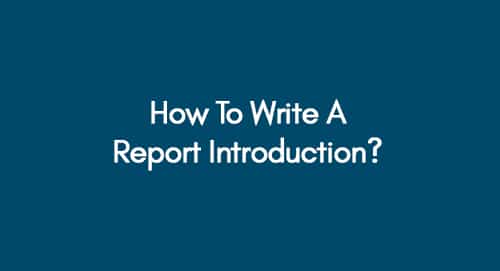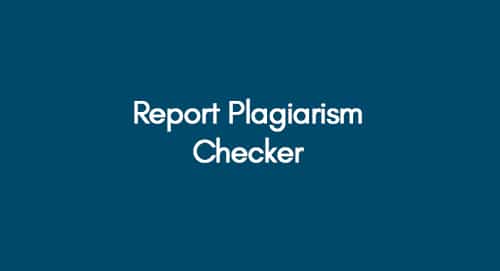
How to Write a Report Introduction: A Step-By-Step Guide
October 12, 2022
How Does the Report Plagiarism Checker Helps Students Get Better Academic Results
October 12, 2022The key to effectively documenting scientific experiments and discoveries is mastering the art of writing a lab report. When it comes time to write a lab report, many students feel overwhelmed. Crafting a stellar lab report is a critical skill for any scientist. Dive into our blog post on 'How to Write a Lab Report' for expert tips and a step-by-step guide to make your scientific findings shine.
Explore How a Lab Report is Starkly Different from a Regular Essay
A lab report entails the findings of a student during their science project. Lab report writing follows specific conventions and structure.
Following guidelines and tips will help in crafting an A+ laboratory report. Let's explore the fundamentals of how to write a lab report!
What is a Lab Report?
A lab report is a written document describing a laboratory experiment's process, and results and discusses the outcomes. The purpose of a lab report is to communicate the findings of a scientific or engineering study to an audience of fellow scientists or engineers.
Learn More about Lab Report Here
Most lab reports are written in the third person ("The experiment was conducted"). Some lab reports can be written in the first person ("I conducted the experiment").
When to Write Lab Reports in the First Person and Third Person?
When writing a lab report, it is crucial to use the correct point of view. In general, the report should be written in the third person unless directed otherwise by your instructor. The third person's point of view avoids discriminatory or personal language and sounds more objective.
Learn When to Write Report in First Person Here
There can be times when it is appropriate to use the first-person point of view. For example, if you are writing about your experiment or data, you must use the first person. The first-person point of view can also be used when you are writing about your opinion on a particular topic.
Overall, use the first person sparingly and only when it is absolutely necessary. Always ask your instructor for advice on which point of view to adopt when in doubt.
Find out What to Include in Typical Lab Report
A typical lab report includes an introduction, materials and methods, results, discussion, and conclusions. The exact format might vary depending on the style guide used by the journal to which the report is submitted, but all reports must include these essential elements.
Essentials of Structuring a Lab Report
Each component of a lab report has a distinct function and follows a particular convention. The following structure is a guide about how to write a lab report and essentials of structuring a lab report.
Title: Describes the topic of research, experiment or study
Abstract: Summarizes your research objectives, techniques, findings, and conclusions.
Introduction: Provides the necessary background to required comprehend the subject.
Method: This section details the materials and methods used in the experiment.
Results: Tabulates and discusses the outcomes of the study. Leverages qualitative and statistics to explain outcomes.
Discussion: It interprets and describes the results highlighting the limitations, shortcomings, and utility
Conclusion: It summarizes the key findings of your study.
References: Includes lists of cited sources, tables, appendices, and glossaries
Title
The title of a lab report must be descriptive and concise, giving the reader a clear idea of what the report is about. In addition, the title should be informative and specific so that readers can know what they can expect to learn from reading the report. Here are some tips on how to write a title for a lab report:
- Make sure that the title accurately reflects the report's content.
- Be as specific as possible and give readers a clear idea of your report's content.
- Use keywords to help readers find your report when searching for information on the topic.
- Keep the title concise - long titles can be off-putting
- Make the title easy to read and understand - using technical jargon or complicated sentence structure.
Abstract
An abstract is a summary of a report, article, or paper. Your abstract should give the reader a brief overview of the report. Abstracts are typically one to two paragraphs long at the beginning of a report, article, or paper.
An abstract includes four parts:
- The purpose
- Methods
- Results
- Conclusion
State the purpose of the document in the first sentence. The second part should describe the methods used to obtain the results. The third sentence should summarize the results and conclude in the final sentence.
Explore More How to Write Abstract Here
Always write abstract in past tense and third person point of view. It is important to remember that an abstract is not a replacement for the entire document; it is simply a summary.
- Use clear and concise language.
- Avoid including unnecessary details or repeating information from the body of the document.
- Conclude in a single paragraph, not exceeding 250 words.
If you are writing an abstract for a lab report, you may want to include more information about the methods used and the results obtained. However, be sure to keep the abstract brief and concise.
Introduction
The introduction of a lab report explains the experiment's rationale, how it relates to previous research, and how it will address the hypothesis.
It is important to note that the introduction is not simply a description of the experiment but rather an explanation of its significance and a brief overview of the materials and methods used. Ultimately, the introduction provides enough information to allow the reader to understand and assess the experiment's results.
Here are the five tips for writing the perfect introduction
- Start with a brief overview of the experiment.
- Clearly state the hypothesis that you are testing.
- Describe the methods that you used in your experiment.
- Discuss the results of your experiment.
- Conclude with a summary of your findings.
Method
In any scientific lab report, the Methods section is where you describe how you carried out your experiment.
Begin by briefly describing your overall approach, then provide a more detailed description of each step. Describe how you controlled variables, how you performed measurements, and how you analyzed data. Try to use an active voice wherever possible, and avoid using first-person pronouns such as "I" or "we".
Include the following information in your methodology portion:
- The design of the experiment
- The materials used
- The procedure followed
- The controls used
- The data collected
Results
Results are the most critical part of a lab report because they describe observations during your experiment. Most students find writing results challenging because they are unsure how to present their data. The following tips will help you write clear and easy-to-understand results.
- Start by summarizing your data concisely and objectively.
- Use tables or graphs to visualize your data, if applicable.
- Discuss any trends or patterns that you observe in your data.
- Interpret your results in light of your hypothesis or research question.
- Be sure to explain any unexpected results.
Discussion
In this section, you discuss the significance of your findings and how they relate to the hypotheses you generated at the beginning of your experiment. Starting by restating your goals and objectives is essential when writing a discussion. It reminds the reader of the research aim.
Next, you should describe your observations during your experiment. Be sure to include both positive and negative results. Finally, interpret your findings and discuss how they support or refute your original hypotheses.
Conclusion
A conclusion is more than just "the last thing you write." A conclusion is your opportunity to show how the results of your work support your hypothesis, demonstrate what you have learned, and explain any unexpected findings. It should also provide a summary of the main points of your report. When writing a conclusion for a lab report, keep the following in mind:
- Restate the hypothesis or the research question.
- Summarize the main points of the experiment.
- Discuss the significance of the results. Did the results support your hypothesis? If not, how could you explain them?
- Describe any sources of error in the experiment and how they could be corrected.
- Suggest further experiments that could be performed to expand on your results.
References
You will generally incorporate material from sources like your textbook, lab manual, reference book, and articles written for scientific or engineering journals in your lab reports. When using information from sources, you must provide the readers with the sources' names and locations as well as the material's original source. Citations and references are used for this.
Explore the Valuable Insights Offered by References
A reference provides information about the source so that readers may identify its source type and, if required, locate it independently. The lab report usually includes a list of references at the conclusion.
Academic disciplines use a variety of citation and reference systems or document formats. You might be familiar with the CBE (Council of Biological Editors) used in the life sciences or MLA (Modern Language Association) used in English. But even within academic areas, there are several formats since each scholarly publications have its own requirements for the type of system to be employed.
Find out What Kind of Documentation is Needed
Before you prepare your first report, find out what kind of documentation is permissible to use in your class. The lab manual is the best place to look. The lab instructor or the lecture section professor should be contacted if you don't see the type of paperwork required there.
The name-and-year system, the alphabet-number system, and the citation-order system are the three fundamental methods of documentation used. As in the accompanying book and article, the sources are listed alphabetically at the report's conclusion, starting with the first author's last name.
Appendices
An appendix offers supplemental information that is not necessary for comprehending the text itself, but that may be useful in presenting a more thorough knowledge of the research problem. It is too time-consuming to be included in the paper's main body. Each unique topic or data group should have its own appendix, which should always have a title that accurately describes what's within.
Learn More about Appendices Here
The research paper's appendices are always supplemental. Consequently, your study must be self-contained and able to be understood without the appendices. The paper must also include all data required to comprehend the research topic, including tables, diagrams, and findings. The reader would still be able to understand your study's significance, validity, and consequences if the appendix or appendices were eliminated since the material is unnecessary.
Get 3+ Free Dissertation Topics within 24 hours?



























